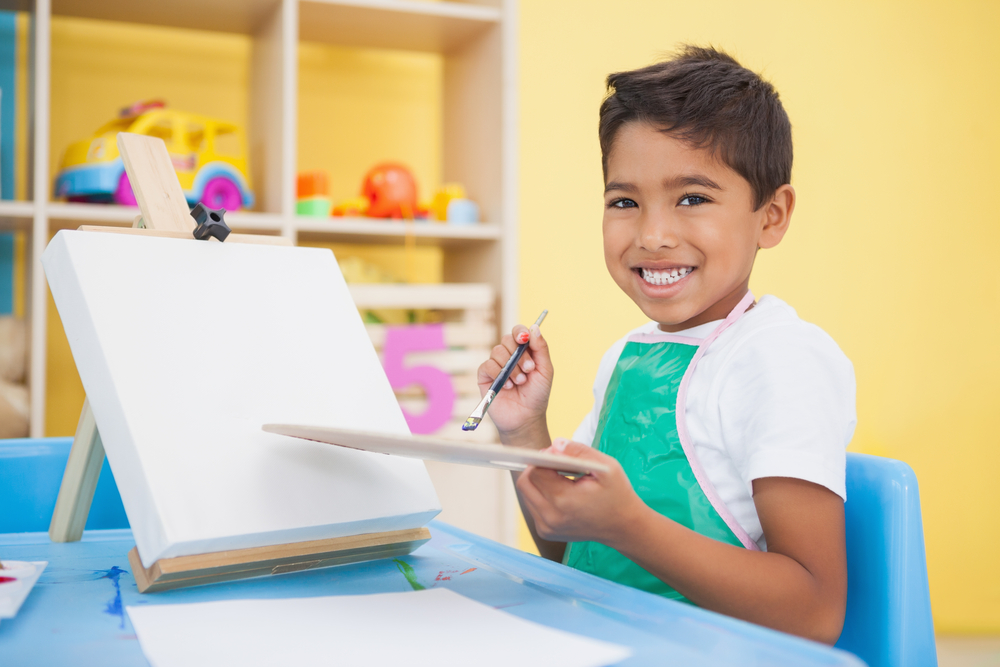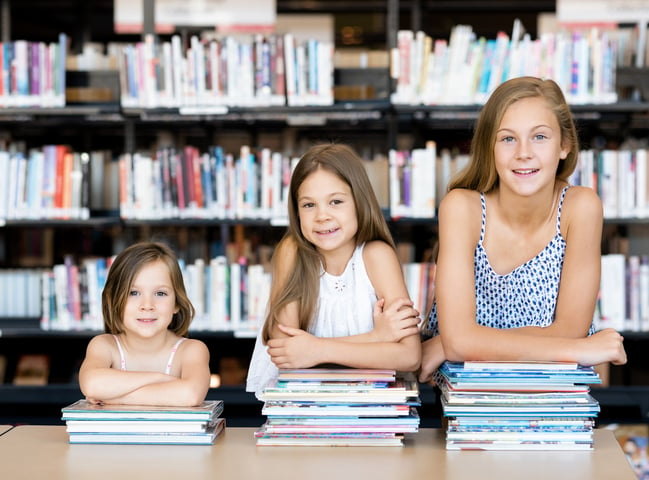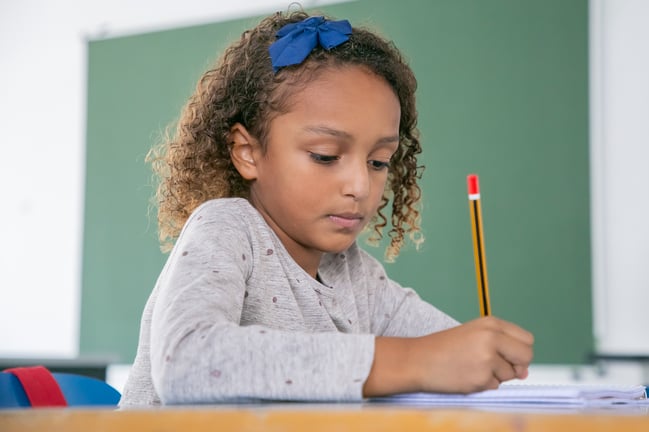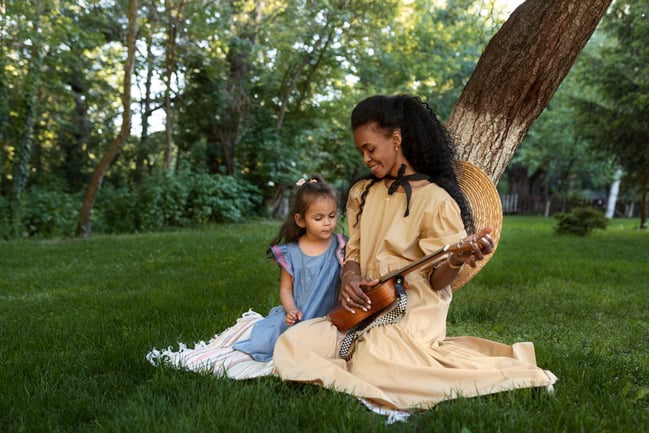

Communication, Language, and Literacy
Older Preschoolers (45 to 60+ months)
Components and Developmental Indicators
Older Preschoolers (45 to 60+ months)
Components and Developmental Indicators
Developmental Indicators
CLL Goal-1: Through their explorations, play, and social interactions, children successfully communicate for multiple purposes.

Initiate and engage in conversation and discussions with adults and other children that include multiple back-and-forth exchanges.

Participate in a group discussion, making comments and asking questions related to the topic.

Provide meaningful responses to questions and pose questions to learn new information, clarify ideas, and have their needs met.

Follow multi-step directions that contain details (“Please go to your room, find your blue shirt and put the dirty one in the laundry basket.”).

Appreciate and use humor.
CLL Goal-2: Through their explorations, play, and social interactions, children speak clearly and use the grammar of their home language.

Adapt their communication to meet social expectations (speak quietly in library, speak politely to older relative).

Speak clearly enough to be understood by most people, although may make some pronunciation errors.

Use complete sentences that are grammatically correct most of the time to express ideas, feelings, and intentions.
CLL Goal-3: Through their explorations, play, and social interactions, children understand and use an ever-expanding vocabulary.

Use an increasingly rich and sophisticated vocabulary to clearly express their thoughts (using two or more new words each day in play and meaningful contexts).

Tell real or imaginary stories with more detail.

Independently sing or create their own songs, chants, and rhymes.

Act out defined roles and storylines in dramatic play with back-and-forth dialogue with each other.

Uses new subject-specific words after repeated exposure to meaningful experiences and vocabulary (after playing in the block area with an adult, using ramps and balls, talks about ramps and inclines).

Infer the meaning of new words from the context in which they are used (figuring out the correct names for two new foods when the adult says, “Today we’re having tortillas with beans and empanadas with sauce” by distinguishing between the beans and sauce).

Name other words for objects and actions (walk -stroll) and accurately choose the most appropriate term from two similar words (“It’s not just warm, it’s burning hot!”).

Put similar words into categories (hat, mitten, coat, boot).

Name common opposites for some words.
Developmental Indicators
CLL Goal-4: Through their explorations, play and social interactions, children develop interest, motivation, and appreciation for literacy-based materials and activities.

Engage in reading behaviors independently with increased focus for longer periods of time.

Demonstrate motivation, interest and enjoyment in reading, books and other printed materials, acting out stories while engaged in play independently and with others.

Listen to and discuss increasingly complex story books, information books, and poetry.

Identify an assortment of print resources, including books, magazines, invitations, and cards, as well as e-books and other electronic media if available.

Point to title of book when asked after adult has read title and author.
CLL Goal-5: Through their explorations, play, and social interactions, children comprehend, use, and begin to reflect on and analyze information in books and other media.

Retell a story from a familiar book and relate it to real-life experiences, with prompting and support from an adult.

Make predictions of next steps in a story.

Name two or more similarities and differences between two characters, their experiences, or settings, when prompted by an adult.

Use informational texts and other media to learn about the world, infer from illustrations, ask questions, and talk about the information.

Use knowledge of the world to make sense of more challenging texts.

Relate personal experiences to an increasing variety of events described in familiar and new books.

Ask more focused and detailed questions about a story or the information in a book.

Give a reason for liking, or not liking, a story or book.
CLL Goal-6: Through their explorations, play and social interactions, children begin to recognize basic concepts of print and discover that they can get meaning from print.

Hold a book upright while turning pages one by one from front to back.

Demonstrate understanding of some basic print conventions (the concept of what a letter is, the concept of words, directionality of print).

Run their finger under or over print as they pretend to read text, with prompting and support from an adult.
CLL Goal-7: Through their explorations, play, and social interactions, children listen, identify, and respond to sounds, and develop phonological awareness.

Show joy in playing with the sounds of language, repeating songs, poems, finger plays, and rhymes, occasionally adding their own rhymes.

Demonstrate the ability to hear individual parts of words and separate the parts using clapping, finger snapping, or other movement (clapping out each syllable of pup-py, di-no-saur).

Repeat familiar songs, rhymes, and phrases from favorite storybooks.

Discriminate sounds in spoken language, recognizing rhyming sounds and the first sounds in some words.

Listen and respond to conversations with adults and other children during play.

Listen attentively to books and stories.
CLL Goal-8: Through their explorations, play, and social interactions, children develop knowledge of letters and the alphabetic principle.

Demonstrate knowledge of the alphabetic principle, the concept that the sounds of speech can be represented by one or more letters of the alphabet.

Recognize and name at least half of both upper- and lower-case letters of the alphabet, including those in their own name and other words that are the most meaningful to them.

Make some sound-to-letter matches, using letter name knowledge (notice the letter “b” with a ball and say, “ball,” say, “a-a-apple.”).

Associate sounds with the letters at the beginning of some words, such as awareness that two words begin with the same letter and the same sound.
Developmental Indicators
CLL Goal-9: Through their explorations, play, and social interactions, children use writing and drawing as means of communication.

Represent thoughts and ideas in drawings and by writing letters or letter-like forms.

Demonstrate understanding that their spoken words can be represented with written letters or symbols as they dictate their thoughts, stories, and experiences for an adult to write.

Independently engage in writing behaviors for various purposes (write symbols or letters for names, use materials at writing center, write lists with symbols/ letters in pretend play, write messages that include letters or symbols).

Demonstrate motivation to draw and write during play, experimenting with writing tools, such as pencils, crayons, markers, computers and other electronic devices.
CLL Goal-10: Through their explorations, play, and social interactions, children grow in their understanding of letters and writing skills.

Use an assortment of writing tools and materials with increasing precision.

Use drawing to represent their ideas and begin to use some recognizable letters and approximations of letters to attempt to write some familiar words and communicate a message.

Attempt to write their own name using a variety of materials (crayons, markers, in sand or in shaving cream).

Try to connect the sounds in spoken words with letters in the written word (write “M” and say, “This is Mommy.”).

Use environmental print (such as signs, labels on food, and general print around them) to help in their writing, and ask adults for help in writing messages, lists, and stories.
Developmental Indicators
CLL Goal-11: Through their explorations, play, and social interactions, children demonstrate an understanding that there are multiple languages and begin to communicate in another language other than their home language.

Name at least one example of a language other than their home language.

Say simple greetings in another language, such as “Hola” (“hello” in Spanish) and “Adios” (“goodbye” in Spanish) or use sign language to express a greeting.

Play with sounds and intonation of new languages as well as their home language.

Identify names of common objects in the environment in a language other than their home language.




